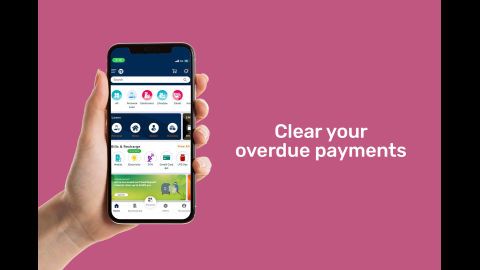What is the NACH mandate?
e-NACH (Electronic National Automated Clearing House) is a digital payment facility introduced by the National Payments Corporation of India (NPCI) to automate recurring payments such as loan EMIs, mutual fund SIPs, insurance premiums, and utility bills. It eliminates the need for manual payments by allowing users to authorise auto-debits from their bank accounts.
The process begins with the customer providing a one-time digital mandate authorisation through net banking or debit card authentication. Once authorised, the mandate enables automatic debit instructions to be sent to the customer’s bank on scheduled dates. The bank then processes the payments as per the defined frequency and amount.
e-NACH offers a secure, paperless, and time-saving solution that benefits both customers and service providers. It ensures timely payments, reduces the risk of defaults, and enhances convenience. It is widely used across banking, NBFCs, mutual fund houses, and other financial institutions in India.
How to register for e NACH mandate
Here’s a step-by-step guide on the NACH mandate registration process for Bajaj Finserv.
Step 1: Log in to Bajaj Finserv service portal
Step 2: Go to the mandates and documents option in the main menu.
Step 3: Select the loan account for which you want to update the mandate.
Step 4: Enter the new bank account details.
Step 5: Choose the process of registration and proceed.
If you’ve opted for the ‘debit card/ net banking option, you’ll be redirected to the ‘Digio Page’. Here you can click on your registration mode, read the disclaimers, and then submit it.
Step 6: Once you complete either of the processes, you’ll be redirected to your preferred bank’s website.
- Net banking: Enter your login details and OTP to authenticate your NACH mandate using the bank’s website.
- Debit card: To complete the Bajaj Finserv NACH mandate online with a debit card, provide your debit card details and OTP using the bank’s website.
Step 7: Once this mandate is authenticated successfully, your bank will approve it in due course.
After you complete this process and your Bajaj Finserv NACH mandate receives approval, you can check the same on your Bajaj Finserv account.
Alongside knowing the registration process of e-mandate registration, you should also know that you can cancel it before its expiry. You can contact your bank for this purpose. Otherwise, a related organisation can also do it by submitting a form.
Common Issues During e-NACH Registration and Solutions
Common Issue |
Description |
Solution |
Invalid bank details |
Incorrect account number or IFSC entered during mandate creation |
Double-check and re-enter correct bank details before submission |
Authentication failure |
Failure during net banking or debit card authentication |
Ensure credentials are valid and net banking is active |
Technical glitches |
Website or app issues causing delays or failure in mandate registration |
Retry after some time or use an alternate browser/device |
Bank not supported |
User’s bank is not listed in the supported e-NACH network |
Use a supported bank account or switch to physical NACH if allowed |
Mandate rejection by bank |
Mandate declined due to mismatch in account information or insufficient balance |
Contact the bank for clarification and re-initiate with accurate details |
Delay in approval |
Mandate status remains pending for a long time |
Follow up with the service provider or bank for escalation |
Features of NACH Mandate
The advantages of a NACH mandate are –
-
Streamlined payment system
The most significant NACH mandate advantage is simplifying the payment method. Nowadays, you can easily pay off your loan EMIs, or make timely deposits through this system. Moreover, there’s no hassle of managing physical cash, which further eases the process.
-
Lowering administrative costs
With this mandate facility, organisations don’t have to chase their clients for payments. They can ask them to sign this form and complete the payments accordingly. Hence, it lowers the administrative costs associated with it.
-
Simple and transparent
Irrespective of the financial institutions, the NACH mandate is a simple process to follow. Once you sign the required form and submit it, it will get activated, allowing financial institutions to complete transactions without hassle.
-
Secured process
Besides all its convenience, a NACH mandate system offers a secure transaction process. This centralised framework is managed according to RBI’s latest safety guidelines. Also, the payment solution providers strictly maintain PCI compliance, ensuring greater safety.
Types of e-NACH mandate
Along with that, you should also know that an e-NACH mandate has two classifications. Here are the details.
I. Debit mandate
Once signed, it will allow financial institutions to debit the required amount from your account after the specified period. For instance, if you’re paying for a loan, the lender will automatically debit its EMI amount every month. It will streamline the payment and avoid any chances of default.
II. Credit mandate
Similar to the debit mandate, you’ll receive them automatically if there’s any periodic payment. For that, you need to sign the required NACH mandate and submit it.
Comparison of e-NACH with traditional payment methods
Aspect |
e-NACH |
Traditional Payment Methods |
Process |
Fully digital and automated |
Manual, paper-based or semi-digital processes |
Convenience |
High – requires one-time setup only |
Low – requires recurring manual intervention |
Approval Time |
Instant or within 24–48 hours |
Several days due to physical paperwork and verification |
Error Rate |
Low – system-driven and pre-verified details |
Higher – prone to manual errors and delays |
Security |
Secure with digital authentication and encryption |
Moderate – often lacks multi-layered security |
Cost & Efficiency |
Cost-effective and reduces operational overheads |
Higher administrative cost and effort |
Tracking & Updates |
Real-time tracking and instant updates |
Limited tracking, often requires manual follow-ups |
Best Suited For |
Recurring payments like EMIs, SIPs, premiums |
One-time or irregular payments |
Frequently asked questions
You can register NACH mandate by contacting your respective banks. You can fill up the mandate details online and verify them through your bank’s website. After that, you’ll receive your mandate for NACH.
Typically, a Bajaj Finserv NACH mandate or any other E NACH takes 10 to 15 days to get approved (may vary on case-to-case basis).
The NACH mandate charges are Rs. 0.20 for ACH 306 (migrated), ACH debit, and ACH Pungrain (charges may be subject to change).
The NACH mandate works by providing you with the liberty to allow any other financial institution to auto-debit or credit money in your account. For this purpose, you complete a registration with your bank and select which organisation will have the access. Also, you’ll also have the power to cancel it at any given time. This process aims to streamline the payment process and bring more transparency.
To process e-NACH, log in to your bank's net banking portal or mobile app. Navigate to the e-NACH or auto-debit section, select the desired biller, and fill in the required details. Authenticate the mandate using either net banking credentials or a debit card, then verify via OTP sent to your registered mobile number.
To process e-NACH, log in to your bank's net banking portal or mobile app. Navigate to the e-NACH or auto-debit section, select the desired biller, and fill in the required details. Authenticate the mandate using either net banking credentials or a debit card, then verify via OTP sent to your registered mobile number.
To activate a NACH mandate, obtain the NACH form from your service provider or download it from their website. Fill in the necessary details, sign the form, and submit it to your bank. The bank will verify and process the mandate, after which it will be activated for automatic periodic payments.
The full form of e-NACH is Electronic National Automated Clearing House. It is a digital platform launched by the National Payments Corporation of India (NPCI) that facilitates automated and paperless processing of recurring payments such as EMIs, insurance premiums, SIPs, and utility bills.
e-NACH is entirely digital and faster, allowing mandate registration through net banking or debit card authentication. Traditional NACH, however, involves submitting physical forms and signatures at the bank, making the process slower and more prone to delays or errors due to manual handling.
While not always mandatory, many lenders insist on e-NACH registration to ensure timely and automated loan EMI payments. It offers convenience, reduces default risk, and helps lenders streamline their collections process, making it a preferred mode for regular and recurring instalment payments.
e-NACH is highly secure as it uses multi-factor authentication via net banking or debit card, encryption, and secure banking gateways. The entire process is regulated by NPCI and banks, ensuring the safety of users’ financial data and preventing unauthorised access or fraudulent transactions.
e-NACH itself does not directly affect your credit score. However, if an e-NACH mandate fails due to insufficient funds and results in missed EMI payments, it may negatively impact your credit score. Timely and successful e-NACH payments can help maintain a positive credit history.








